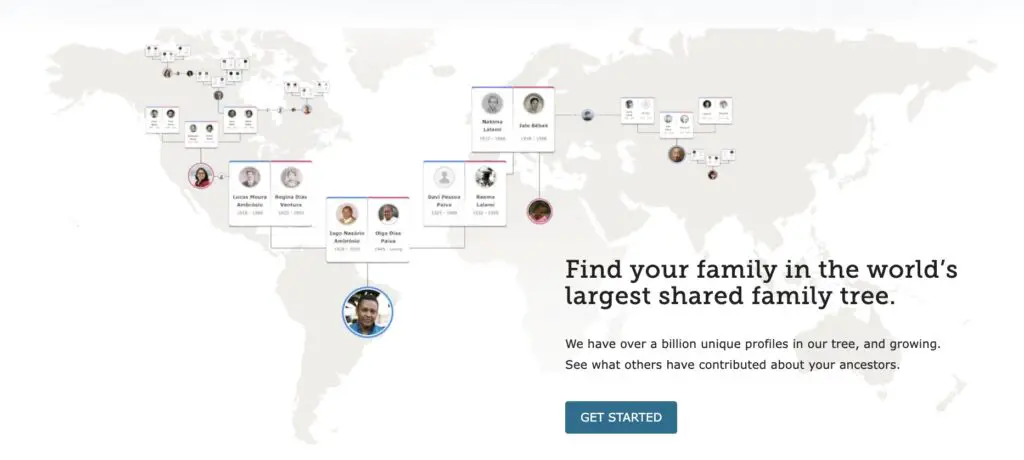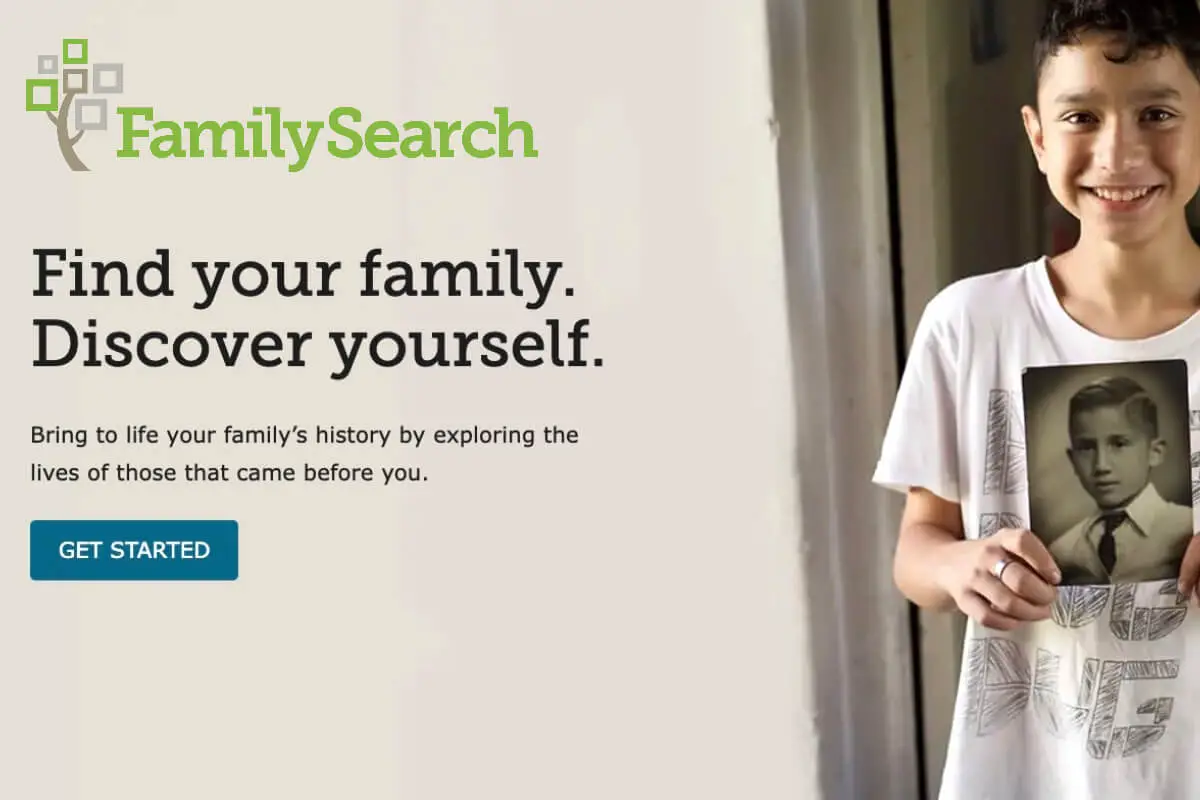Exploring your family history doesn’t have to break the bank. You can trace your lineage and discover various records online without committing to pricy monthly subscriptions.
One platform we highly recommend for budget-friendly yet comprehensive genealogical research is FamilySearch.org. This resource is free to use and boasts an extensive collection of records that can provide a solid foundation for your family history journey. Please keep reading to discover why FamilySearch is our go-to website for genealogy.
Table of Contents
- How To Research Your Family Tree Without Monthly Fees: 10 Reasons To Use FamilySearch.org
- 1. FamilySearch.org Is Completely Free To Use
- 2. FamilySearch.org Has An Extensive Collection Of Records
- 3. User-Friendly Interface
- 4. Collaborative Platform
- 5. Constantly Updated
- 6. Worldwide Scope
- 7. Customizable Search Filters
- 8. Community Support
- 9. Historical Maps And Other Resources
- 10. Safe And Secure
- Getting Started With FamilySearch
- Related Questions
How To Research Your Family Tree Without Monthly Fees: 10 Reasons To Use FamilySearch.org
You’re not alone if you’ve ever been curious about tracing your family history but held back due to the cost. Many people yearn to connect with their roots, but the idea of paying monthly fees for subscription-based genealogy websites often dissuades them.
But guess what? You can dive deep into your family tree without spending a dime!
One of the best resources to accomplish this is FamilySearch, a non-profit family history organization.

This article will guide you through researching your genealogy for free and give you 10 compelling reasons why FamilySearch should be your go-to platform.
1. FamilySearch.org Is Completely Free To Use
FamilySearch doesn’t just offer a “free trial” or “limited free access” like other genealogy websites. It is 100% free to use, period. You can search records, create your family tree, and even collaborate with others without any hidden charges.
2. FamilySearch.org Has An Extensive Collection Of Records
One of the most significant advantages of using FamilySearch is its sheer volume of records in its database. With billions of names across hundreds of collections, you can search through birth, marriage, death records, census data, military records, and much more.
This extensive library provides a robust starting point for anyone looking into their family history.
3. User-Friendly Interface
If you’re new to genealogy, you might be worried about how to navigate a complex system. FamilySearch offers an intuitive and user-friendly interface that makes it easy for beginners to search records, build family trees, and explore historical documents.
4. Collaborative Platform
FamilySearch allows you to collaborate with other family members or researchers looking into the same family lines. You can add information, correct inaccuracies, and communicate directly through the platform.
Collaboration increases the accuracy and breadth of the data, making your family tree more comprehensive and reliable.
5. Constantly Updated
New records and resources are continuously being added to the FamilySearch database, meaning there’s always something new to discover. Even if you don’t find what you’re looking for today, there’s a good chance that relevant information may appear in the future.
6. Worldwide Scope
FamilySearch is not limited to records from just one country or region; it is a global platform. Whether your ancestors hail from Europe, Africa, Asia, or the Americas, there are records from all over the world.
This is especially helpful for those with diverse family backgrounds.
7. Customizable Search Filters
The platform allows for highly customizable search options. You can filter by location, period, type of record, and other criteria. This is a significant benefit when dealing with common names or pinpointing records in a specific geographical area.
8. Community Support
FamilySearch has a strong community of users and volunteers who contribute to forums, assist, and even volunteer to digitize more records. If you ever hit a roadblock in your research, there’s a good chance someone in the community can offer guidance.
9. Historical Maps And Other Resources
Apart from just records, FamilySearch also provides access to historical maps, books, and other educational resources. These tools can be invaluable in understanding the context in which your ancestors lived, thereby enriching your overall genealogy experience.
10. Safe And Secure
Security and privacy are top priorities for FamilySearch. Your data is protected, and you can control what you wish to make public or private. It’s a secure platform to build your family tree and store sensitive information.
Getting Started With FamilySearch
Now that you know why FamilySearch is an invaluable tool for your genealogy research, getting started is simple. All you need to do is sign up for a free account.
Once that’s done, you can add names to your family tree and search for records to validate or extend your ancestral lines.

Step 1: Create Your Account
Go to the FamilySearch website and register for a free account. You’ll need to provide basic information like your name, email address, and password.
Step 2: Start Building Your Tree
Once you’re in, you can enter information into your family tree. Begin with what you know, like your immediate family, and work backward.
Step 3: Search For Records
Utilize the platform’s search functionality to find records that can confirm or expand what you already know. Remember to use the advanced search filters for more precise results.
Step 4: Collaborate
Don’t forget to collaborate with others. If you find someone researching a common ancestor, reach out to them. Two heads are often better than one.
Step 5: Regularly Update
Given that new data is continuously added, make it a habit to revisit your family tree and searches occasionally.
Genealogy research doesn’t have to be expensive. With FamilySearch, you can thoroughly explore your family history without worrying about monthly fees. So why not start your journey today?
The Hummel Family is a website all about Family History research. We focus on Swedish, German, English, Scottish, and American Genealogy. We also discussed Asia and China, as we had ancestors who spent many years in China.
You are welcome to join us and become part of our community by signing up for our FREE newsletter, The Hummel Family; sign up by clicking here.
Check out our Youtube Channel, Family History Buzz, by clicking here.
Related Questions
Does Sweden Have Census Records?
Sweden does not have a census collection or records like the United States. The Sveriges Befolkning Records are usually translated from Swedish into English as Sweden’s Census Records. Technically speaking, the Sveriges Befolkning Records is not an official census record. The data was collected from the local Swedish Lutheran parish’s household examination records, not by a census bureau or another government organization.
You can discover more by reading Does Sweden Have Census Records? Tips To Finding Your Swedish Family Roots by clicking here.
Why Do So Many Swedish Last Names End in Son?
When doing your Swedish family history research, one of the most important things you need to understand is how Swedish last names work. Many Swedish last names end with “son or “sson” as they are patronymic names.
You can learn more by reading Why Do So Many Swedish Last Names End in Son? by clicking here.
How Reliable Is The Genealogy Website FamilySearch.org?
FamilySearch.org is a very reliable genealogy website. It is considered one of the best genealogy-focused research websites in the world. One of the best things about this is that the website is free for everyone, regardless of affiliation or religion. The website has millions of genealogy records, and the records have been updated daily. It is also a collaborative website, and you may find relatives ready to work on your family line so you can tap into the work they have already done.
You can learn more by reading How Reliable Is The Genealogy Website FamilySearch.org? by clicking here.
